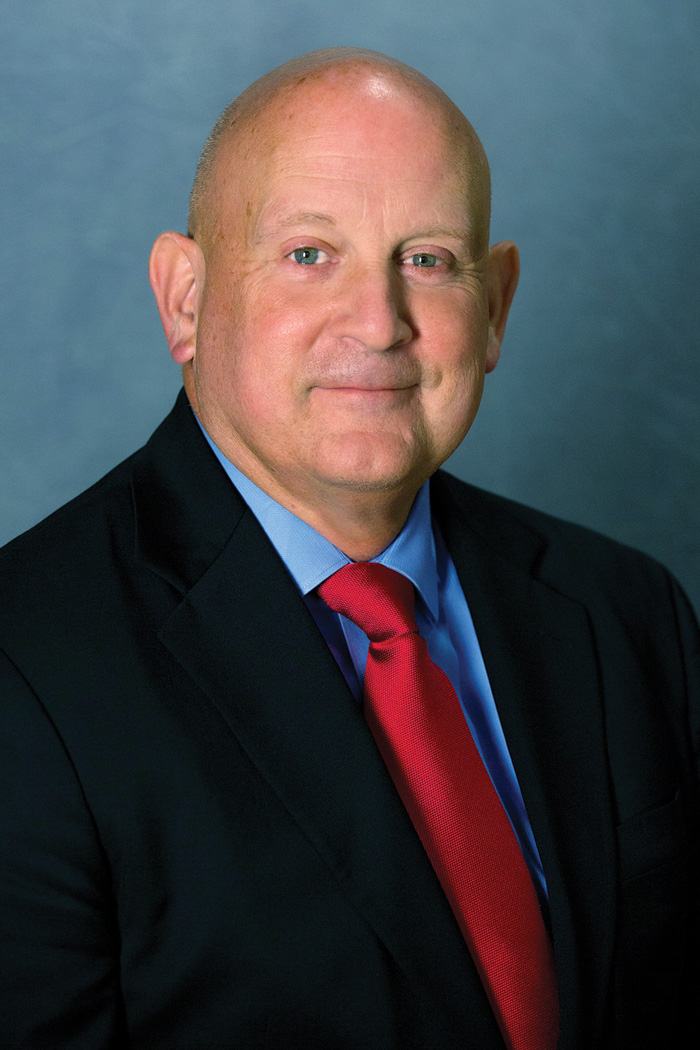Educators and employers are putting increased emphasis on STEM—science, technology, engineering, and mathematics. The cannabis industry, too, is embracing the disciplines, not only in areas like genetics, laboratory testing, and greenhouse design, but also in consumer product development. As more doctors, scientists, academics, and other professionals migrate to cannabis from the mainstream, they’re changing the way the plant is perceived and used.
It remains to be seen whether the cannabis industry learned anything from the tech industry’s boom-bust cycles and other growing pains, but as this historically black-market business continues to transform into a legal, multi-billion-dollar economic engine, one thing is clear: Entrepreneurs are investing significant time and money in new technologies and scientific methods to help establish cannabis as an integral part of healthcare and lifestyle.
One prominent trend in the industry focuses on building more personalized and consistent experiences for consumers, whether they’re using cannabis to treat chronic illness or for recreational purposes. As people better understand weed’s potential, the trend is sure to become more widespread.
GoFire: an app-ealing alternative
Not long ago, bowls carved into apples and gravity bongs built from plastic two-liter bottles were considered innovative smoking apparatuses. Times have changed, and the medicinal properties of cannabis prompted scientists and technology entrepreneurs to give hippy lettuce more sophisticated, dignified delivery platforms.
For a variety of reasons, vaping has become the de rigueur method of cannabis consumption across the United States, so it was only a matter of time before someone tried to build the killer app that would let vape enthusiasts take precise, remote control of their equipment. The GoFire (GoFire.co) may be the first real stab at such a product. A convection vaporizer built with pharmaceutical-grade components, the GoFire includes a proprietary SMART cartridge system that meters precision doses of flower, oil, or extracts. Instead of heating the entire contents of an oil cartridge as most other vaporizers do, the GoFire allows users to extrude oil into a separate chamber in 2.5mg doses. One of the unique benefits of the design is that only the oil sent into the chamber is exposed to heat, thus preserving the delicate terpenes and the overall integrity of the custom oil blends. A Bluetooth-linked application on a smartphone displays the cannabinoid and terpene profiles and how much oil is left in the chamber, so users can see exactly how much they smoke in a given session.
“I don’t like vaporizers. They don’t taste good, and they give you an inconsistent, unreliable experience,” said GoFire Chief Executive Officer Peter Calfee. “We solved that problem by creating a consistently delightful experience. Once people try it, they’re smitten.”
After completing a vaping session, users are encouraged to make notes and upload them to a cloud-based GoFire community. Machine-learning algorithms track the user information, which is displayed in a community science section where other users may review it. GoFire and its partners believe the post-purchase quantitative data will be a valuable source of product development information that can be used to refine current blends and develop new ones.
With a steering committee that includes twelve physicians, from the beginning GoFire was intent on building a product that would fit into the modern medical paradigm and give doctors and patients a platform suited for prescribing and accurately dosing cannabis products. “This is a true medical delivery mechanism designed to live up to the promise we’ve made to patients, and we went above and beyond in our design and materials to set this up for FDA approval,” explained Calfee.
The GoFire also has crossover appeal for recreational users and can be put to use as a portable dab rig. The device allows for precise temperature settings, which is an important consideration when smoking rosin and resin extracts.
Above all, GoFire’s engineers designed and built the device to demystify the science of oil blends, terpenes, and cannabinoids—the effects of which the scientific community is only beginning to understand—and offer a product that gives patients the same results each and every time.
“CBC and CBG, CBN… Why do you need to know all that?” Calfee asked. “The chemical structure is too much information. People are just looking for something to help them relax or sleep.”
Cannabis vs. opioids
The opioid epidemic in the U.S. results in more than 100 deaths each day from legal painkillers like morphine, oxycodone, and fentanyl as well as illegal drugs including heroin. Legal opioid drugs primarily are designed to replicate the pain-reducing properties of opium, which binds to receptors in the brain to disrupt pain signals and releases dopamine to give patients a sense of euphoria. Cannabis has been suggested as a potential adjunct for opioid addiction treatment, and James Henry SF (JamesHenrySF.com) has taken this cause to another level by working with a team of physicians to develop customized oil blends that specifically target chronic pain and other common medical conditions.
 “We want to educate patients on how to use cannabis in the best ways and how to deal with common conditions such as insomnia, depression, and anxiety without getting baked along the way.”
“We want to educate patients on how to use cannabis in the best ways and how to deal with common conditions such as insomnia, depression, and anxiety without getting baked along the way.”
—James Victor, co-founder, James Henry SF
With its formulations, the Bay-Area-based cannabis company hopes to convince patients who use pharmaceutical drugs to give cannabis a try. Working with BAS Research, a highly regarded manufacturer based in Berkeley, California, James Henry SF has developed three oil blends designed to create different moods and levels of relief. Daytime Focus is a high-CBD formulation designed to alleviate anxiety and help people focus. THC-dominant formulation Evening Social is meant to deliver an uplifting, communal feeling. Weekend Retreat, a full THC formulation, was created for patients seeking pain relief and deep relaxation or experienced cannabis users looking for a more intense experience.
While developing its oil blends, James Henry SF principals realized no existing vaporizer would perform in a way that allowed patients to derive optimal benefits from the company’s medications. Co-founder John Adams explained vaporizers go through dozens of heating and cooling cycles, and each cycle slightly degrades the taste of the oil and terpenes. By reducing the oil’s volume to 300mg per pen instead of the standard 500mg to 1,000mg, the company’s formulations taste the same on the first drag and the last, he said.
Creating cannabis medicines that mimic the effects of pharmaceutical drugs like OxyContin, Adderall, and Prozac is one of the primary goals of James Henry SF’s development efforts. Co-founder James Victor believes vaporization is the safest and most effective choice for delivering cannabis medication because it delivers immediate relief and patients won’t overconsume.
“Patients in pain don’t want to wait around for an edible or sublingual to kick in,” Victor said. “We want to educate patients on how to use cannabis in the best ways and how to deal with common conditions such as insomnia, depression, and anxiety without getting baked along the way.”
In order to target specific ailments, James Henry SF has been working with physicians who specialize in cannabis-derived treatments. Dr. Janice Knox is a co-founder of American Cannabinoid Clinics; her husband David and daughters Jessica and Rachel all are involved in teaching patients how to use cannabis responsibly for illness, therapy, and healing. The family has consulted with thousands of patients over the past six years. Although they aren’t legally allowed to prescribe medicinal cannabis, they can advise patients about how various cannabis products can help balance, regulate, and repair the body’s endocannabinoid system. As a result of the ongoing collaboration, James Henry SF has been able to develop and refine its blends based on feedback from real patients and their physicians.
For instance, when the company created its Daytime Focus blend, scientists looked at the systemic feelings people experience when using drugs including Adderall, and then tested terpene blends with CBD and THC to mimic the same effects, said Victor. “We are also looking at CBG and CBN and utilizing that information in product development for more advanced formulations,” he explained.
James Henry SF also is working with Dr. Ogadinma (Olga) Obie, an emergency room doctor who specializes in naturopathic healing. She recently moved from Houston to Oakland, California, in order to be closer to a community of doctors and patients who are researching the healing powers of cannabis.
“We need to better understand how the molecules of cannabis are working with our body, and James Henry SF sees that terpenes are probably the easiest to manipulate to develop medications,” she explained. “I think their formulations are the direction we should be going. Patients don’t want side effects. They want relief.”
Because James Henry SF is focused on delivering very precise blends and dosages, the company has entered agreements with like-minded entities including BAS Research (which manufactures James Henry SF formulations), and GoFire.
 “In the future, doctors will be able TO prescribe a certain dosage and lock the device when the patient has used up the formulation.”
“In the future, doctors will be able TO prescribe a certain dosage and lock the device when the patient has used up the formulation.”
—John Adams, co-founder, James Henry SF
“The GoFire is a very attractive device because it can administer precise dosages,” said Adams. “In the future, doctors will be able to prescribe a certain dosage and lock the device when the patient has used up the formulation. We will be able to get into the nuts and bolts of the medical industry and move cannabis into the pharmaceutical realm.”
Infusing cocktails with cannabis
Increased legalization over the past five years has precipitated a new perception of cannabis nationwide. Yet, firing up a joint or bowl in public remains likely to raise eyebrows. By contrast, imbibing alcoholic beverages is common practice in social settings. Kalvara (Kalvara.com), a new beverage infusion system, was designed to appeal to consumers who want a THC buzz without drawing attention to their cannabis consumption.
Using a patented technology called Vessl, Kalvara is packaged in small, nitrogen-pressurized “caps” that, with a simple twist, release a THC nanoemulsion into a proprietary bottle filled with two ounces of liquid. Once a cap’s contents are dispensed, the bottle contains a 10mg serving of a neutral-tasting THC beverage that can be mixed with whatever the user wants to drink. Each Kalvara package contains four caps, and the bottle is reusable. Simply refill the container with water, attach a new cap, and it’s ready to go again.
“This has one flavor, one function, and one dose,” said Walter Apodaca, a twenty-five-year veteran of the beverage industry who now serves as chief executive officer for Vessl (VesslInc.com) and Gizmo Beverages in Tempe, Arizona. “Kalvara can be a replacement for alcohol in social settings, but without the stigma of smoking or vaping.”
One of the benefits of the Vessl technology is each dose in the caps is precisely measured, so the consumer can expect the same experience every time. The buzz sets in within ten to fifteen minutes, Apodaca said, so gratification is relatively quick compared to edibles.
The Vessl technology was developed by Scottish inventor Bernard Frutin, who created a pressurized delivery module that automatically expels its contents into a container of liquid when the user opens the container. Apodaca agreed to commercialize Vessl, and now he licenses the technology to partners in the U.S. and internationally.
Manufacturers of cannabis products face numerous logistical challenges getting their products to market, not the least of which is preserving freshness and potency as they make their way to retail shelves. The Vessl’s oxygen-depleted, nitrogen-pressurized environment keeps active ingredients fresh without preservatives and prevents oxidation caused by ultraviolet light. It’s designed to optimize the freshness and potency of ingredients until the moment a consumer wants to partake.
Apodaca sees Vessl as a game-changer because it has the potential to reduce, dramatically, the amount of packaging material typically required for beverages and doesn’t require refrigeration to keep the product fresh. He estimates about 700,000 Vessl units can be shipped per truckload, whereas only about 50,000 half-liter bottles—a more traditional size for beverages—would fit in the same space.
For the rollout, Apodaca said the company will stick to one flavor, but plans already are in the works to expand the product range.
“I see personalization, customization, and portability being really important, so people [will be able to] choose specific strains and their desired effects,” said Apodaca. “Technology is the best way to deal with that, and so we expect to have five to ten different flavors and functions to help people relax, energize, and enhance libido or creativity.”
In June, Apodaca and his Vessl technology won the Food and Beverage Innovation Forum’s Marketing Award for the packaging product that disrupts the market via groundbreaking new technology.
Tagging plants with DNA
Ever wonder whence came that danky, frosty nug that landed on your doorstep when your canna delivery service made its weekly drop? If New York-based Applied DNA Sciences has its way, you’ll be able find out exactly which farm it came from with the help of a simple lab test.
Applied DNA Sciences has developed a type of controversial plant-tracking program that has law enforcement groups and regulators licking their chops while growers and other cannabis industry operators watch with caution. As the industry moves forward into more widespread markets, the company argues, its CertainT technology could be a boon for both the industry and the organizations tasked with overseeing it.
“With rigorous tracking on top of everything else, [CertainT] will give dispensaries reassurance that the product went through extra testing and what they’re purchasing is aboveboard,” said John Shearman, executive director of marketing at Applied DNA Sciences. “We can see [CertainT] being a badge on the packaging of things, like a Good Housekeeping seal.”
In order for the tracking technology to be effective, every cultivator in a market would be assigned a unique tag, which would be sprayed on plants right after they are harvested but before they are dried and cured. This “CertainT” molecular certificate can be confirmed with a simple lab test that verifies the product’s authenticity and origin anywhere it travels.
The company’s formulation is based on water and a molecular tag that measures in the parts per billion. Tests have confirmed the tag adheres to plants throughout the processing and manufacturing cycle, so whether plants ultimately become oils, shatter, edibles, or other products, tests will detect the tag. Gordon Hope Jr., director of cannabis markets at Applied DNA Sciences, said the tag is “innocuous” and does not integrate with the DNA of the plant; instead, it’s an additional molecule.
Hope estimates the cost of implementing the system would be “less than 1 percent” of a product’s retail price, and state inspectors could test at cultivators, processors, and dispensaries.
The tagging-and-testing technique already has been deployed in the cotton industry, where CertainT tracks more than 200 million pounds of Pima cotton. The technology also has been used to tag everything from microchips to pharmaceutical drugs.
“In Colorado, they are running a $1.4 billion business. They want to make sure money coming in stays in-state, and that means keeping all the license-holders legitimate.”
—Gordon Hope Jr., director of cannabis markets, Applied DNA Sciences
Dispensaries, regulators, and law enforcement officials potentially could use the tags to determine the origin of any cannabis or cannabis products, down to the farm where the plant was grown. If a cultivator owns a patent or other intellectual property related to a strain, the tag could help retail operators validate a product down the supply chain.
“When we look at it from a state and national level, the value proposition rises dramatically,” Hope said. “In Colorado, they are running a $1.4 billion business and trying to protect it. They want to make sure money coming in stays in-state, and that means keeping all the license-holders legitimate.”
While every state that has legalized cannabis imposes some form of tracking program, most use software platforms to account for inventory as it works its way through the market. Employing a technology such as CertainT likely would require new legislation similar to that proposed in Colorado early this year. Though both SB029 and SB279 died on arrival in the state senate, the bills’ author, Senator Kent Lambert [R-Colorado Springs], has vowed to try again.
Applied DNA Sciences believes the technology could give doctors and patients more peace of mind when they are buying products at a dispensary. “Doctors are concerned about getting the right formulation for patients,” Hope explained. “If I buy this brand, do I have the same experience? Clearly the answer is no. With the CertainT emblem on the package, it could become a recognized seal of approval.”
The tags also might be used to help demystify the true identity of strains, given the complex web of genetics and creative strain names that have evolved over the past few decades. In a recent study at the University of British Columbia, researchers found only a moderate correlation between cultivators’ ancestry claims and actual plant genetics.
A question is bound to come up with any tagging discussion: Is it safe to ingest DNA tags?
According to Hope, the short molecular tags used for traceability are chemically indistinguishable from the DNA in any of nature’s living things: humans, plants, animals, and bacteria. In other words, molecular tags are a new use for an ancient substance that is quickly metabolized and disappears once consumed.













